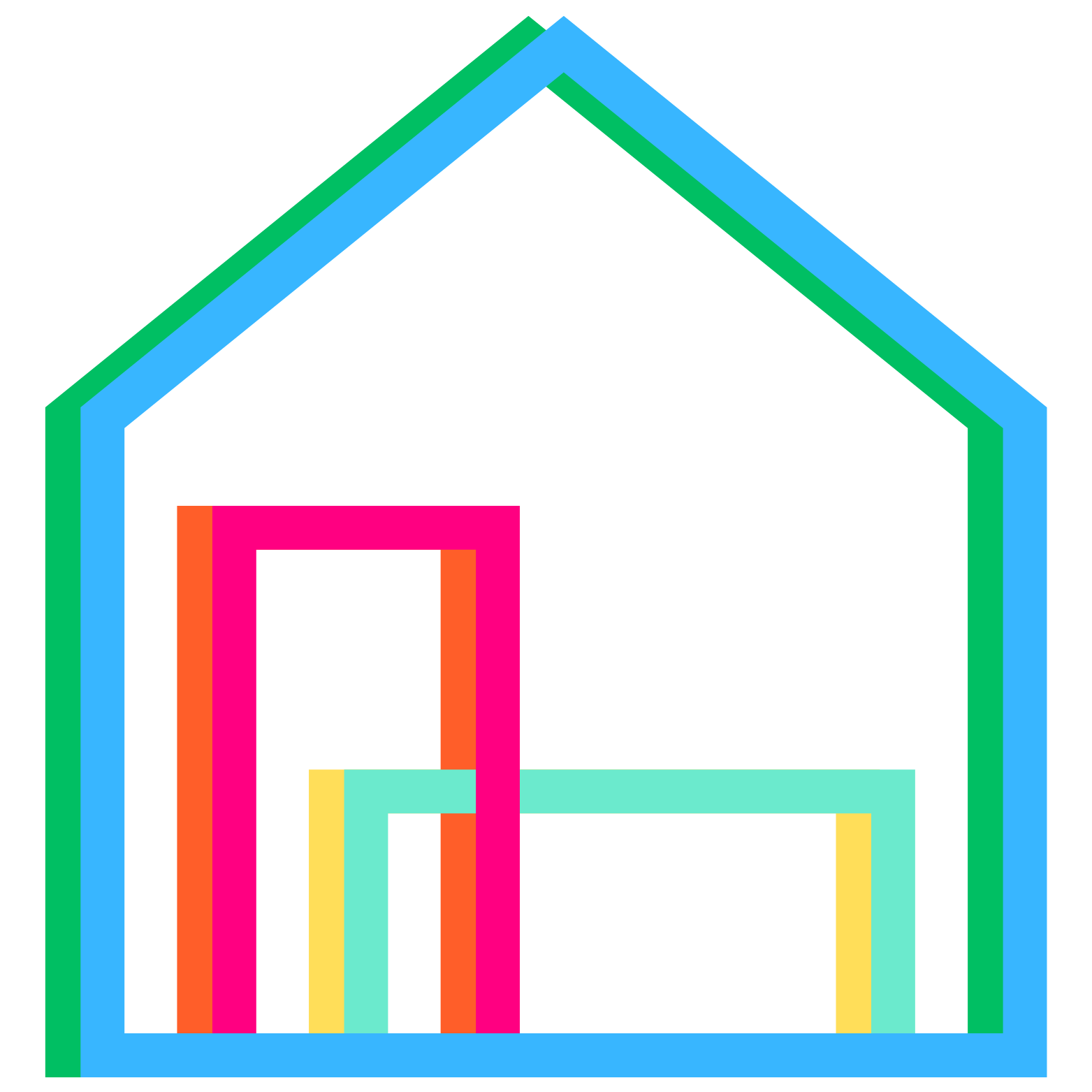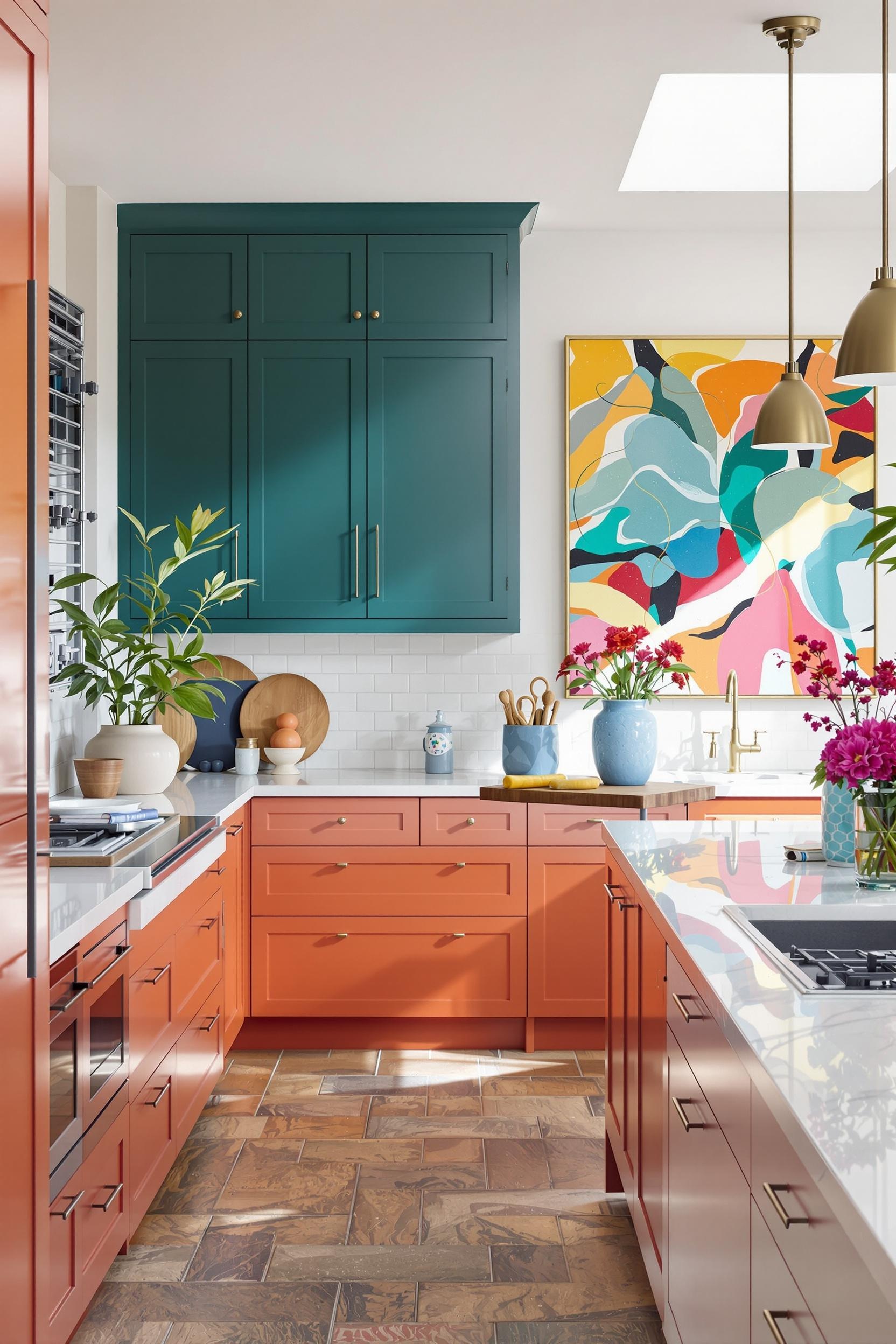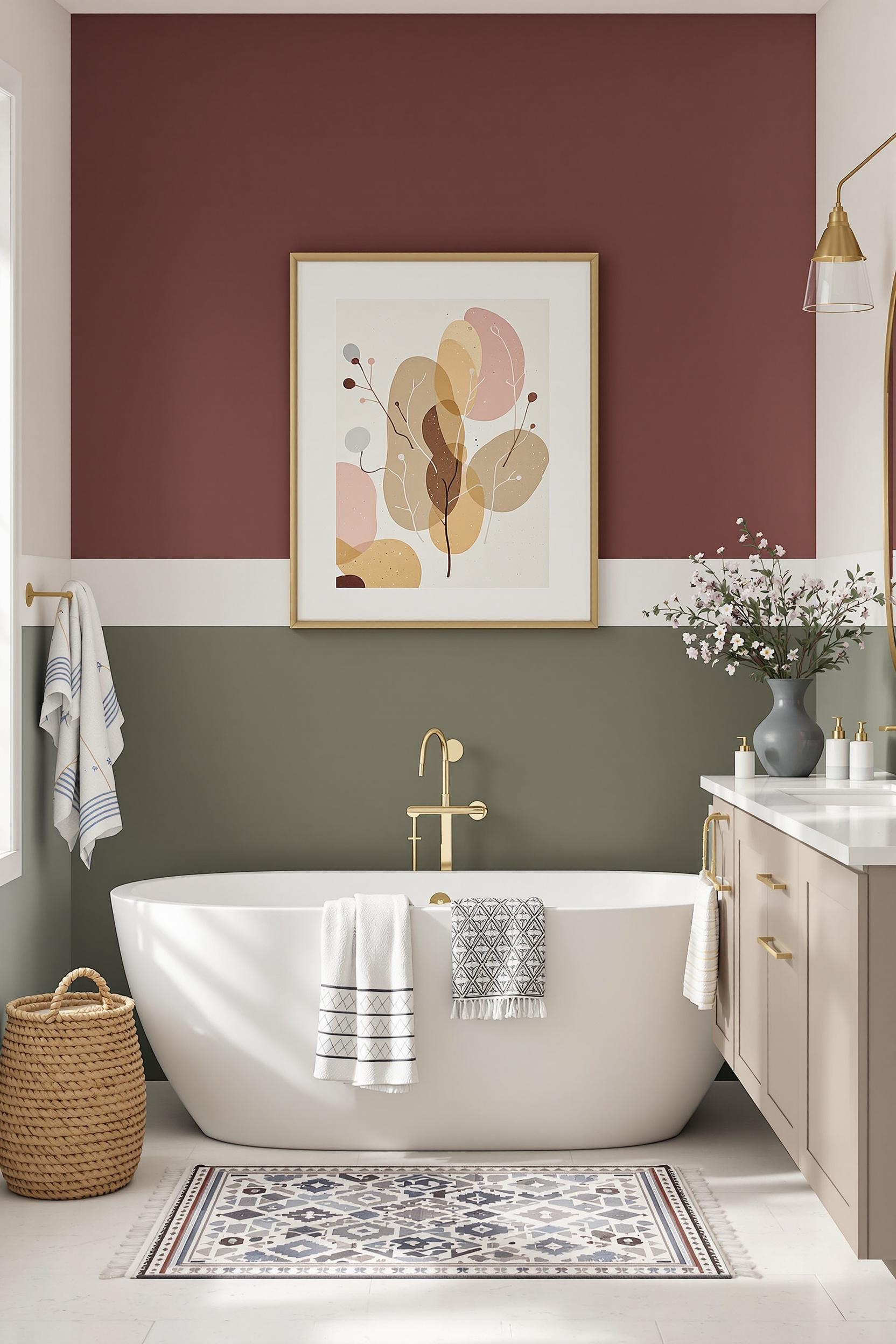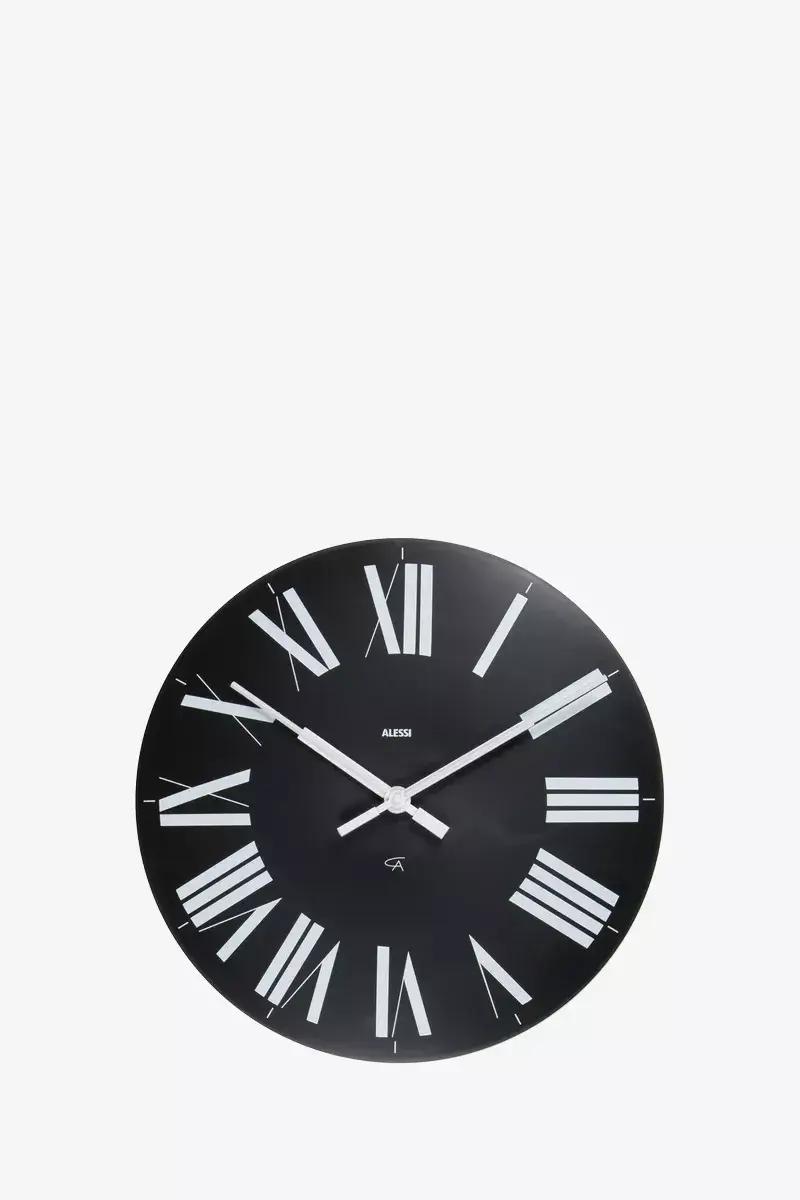
The Impact of Light on Color Blocking in Minimalist Interiors
Have you ever stepped into a room and felt like the colors around you were talking—telling a story, evoking a mood, transporting you into a different state of being? That’s the power of light combined with intentional color blocking interior design. As an interior designer, I’ve seen minimalist rooms come alive through smart lighting. What’s more fascinating is how light—temperature, intensity, and direction—can completely change how we perceive and feel colors.
In this post, I’m diving into how lighting affects color blocking and how you can use this knowledge to completely transform your home. Whether you’re exploring color block paint trends for 2025 or just want to learn how to combine lighting and color blocking in your decor, you’ll find practical tips and science-backed strategies to make your space shine—literally and emotionally.
The Luminous Language of Light and Color Block Combination
Color blocking uses bold, often contrasting colors in creative zones for visual interest. Add lighting to the mix, and those blocks evolve. For instance, warm artificial light can make a vivid red feel cozy and welcoming, while cool lighting transforms it into a dramatic, energetic statement.
I’ve worked with rooms where grayscale accents meet neon colors. Under daytime sunlight, the space feels playful. Under tailored warm evening lighting, it turns moody and artistic. This responsive transformation is now at the heart of 2025’s minimalist design strategies.
Light Temperature: The Invisible Maestro of Color Emotion
Light temperature deeply affects the vibe of any given space. Warm lighting, typically 2700K to 3000K, gives color blocks a calm and cozy energy. Cool lighting (4000K to 5000K) makes edges look sharper and more modern. I use cool lighting in home office designs to enhance focus and productivity. It’s not just about preference—it’s about feel and function.
When I used cool lighting on a navy and gray geometric wall in a minimalist entryway, it made the space gleam with clarity. But with warmer bulbs, it softened the harsh tones and welcomed guests more gently. Those are the types of small changes that completely shift perception.
Smart LED lighting makes all this easier. Systems like Philips Hue or LIFX let you adjust light temperature and even color tones remotely. So the same room can shift from a focused work zone to a chilled-out lounge just by tweaking the lighting. This versatility is especially effective in color blocked multipurpose spaces.
Techniques You Can Apply Today
- Use adjustable smart bulbs to match light to time of day or mood.
- Create color block lighting zones by combining task, ambient, and accent fixtures.
- Experiment with indirect lighting to soften light distribution and allow colors to blend gently.
- Choose light temperature based on the emotional impact you want—cool for alertness, warm for relaxation.
With these techniques and geometric lighting color block designs, you control the personality of your home, hour by hour.
Natural Light: The Ultimate Color Block Enhancer
Sunlight is a designer’s best friend. It highlights architectural details and gives depth to flat surfaces. Throughout the day, the way it hits color blocks changes as the sun moves. A room that feels peaceful at sunrise can feel energized by noon.
Let’s say you’ve styled a space with sage and terracotta blocks. In the morning, gentle sunlight makes the palette feel serene and subdued. Later, the direct sun ramps up the energy. That’s why I often recommend placing key color blocks where they’ll catch morning or afternoon light.
Design Tips for Natural Lighting
- Position color blocks near east or west-facing windows for changing light dynamics.
- Choose reflective paint finishes to bounce natural light around the space.
- Use textured materials like stone, wood, or matte walls to enhance shadows and interest.
When working on a minimalist home transformation, I often anchor color-blocked zones around skylights or tall windows. These architectural features amplify the impact of smart spatial coloring and enhance depth without using extra decoration.
Smart Lighting Strategies: The Future of Color Zoning
Modern minimalist interiors are blending tech with style. I now rely heavily on smart lighting to create flexible, functional spaces. In a small studio or open-plan area, smart lighting divides and defines functions without needing partitions.
Let’s take an example—a geometric accent wall in a living area. You can highlight it with cool-tone LEDs during daytime study sessions. Then, fade into amber tones by evening to create a cozy zone. This approach was a game-changer in a recent open floor plan project I completed.
Why Smart Lighting Works with Color Blocking
- Mood-responsive: change lighting with a tap to shift the feel of the room.
- Energy-efficient: LEDs last longer and use less energy than incandescents.
- Function-flexible: separate zones visually without structural changes.
Bold color blocking meets smart lighting in a truly revolutionary way. Together, they turn static blocks into dynamic design elements that adjust as you do.
Psychology of Light and Color: Designing Emotionally Intelligent Spaces
Colors speak. Light gives them volume. Research confirms this: warm lighting encourages comfort and optimism; cool light helps improve alertness and concentration. When paired intentionally with color blocks, you affect emotional well-being through interior design.
In minimalist bedrooms, I use warm lighting over soft pastel color blocks—creating tranquility and easing stress. In home offices, I prefer contrasting sharp color blocks with cool task lighting for focus and clarity.
It’s all about matching the color block lighting idea to the activity and feeling you want to create. Lighting isn’t just functional anymore—it’s emotional design.
Design Your Dream Space: Light & Color Block Revolution Starts Now
As a design expert, I know lighting is one of the most powerful tools in creating minimalist color blocked interiors. This isn’t about more stuff—it’s about smarter use of what you see and feel.
Transform Your Home with Intelligent Color Blocking Strategies
The future of design embraces the impact of lighting on color blocking in minimalist interiors. Smart LED systems and strategic design create areas that breathe, adapt, and evolve. Consider designing a living room with daytime productivity lighting that shifts to evening relaxation—all wrapped around bold color zones.
Exclusive Design Toolkit: Your Path to Minimalist Mastery
To guide you through this revolution, I created the Color Blocking Lighting Guide—a complete toolkit packed with expert strategies rarely shared openly:
- Understand and use color temperature psychology.
- Master smart bulb and LED layout strategies.
- Design multifunctional rooms that shift vibe effortlessly.
- Stay on top of the most cutting-edge interior design techniques coming in 2025.
Your Personal Design Revolution Starts Here
If you’re ready to do more than decorate—if you’re ready to transform—subscribe to the newsletter where we dissect minimalist lighting color block design room by room.
Unlock Your Design Potential Now
Frequently Asked Questions: Mastering Light and Color Blocking in Minimalist Design
Q1: How Does Light Temperature Affect Color Blocking in Minimalist Interiors?
Light temperature changes how we see and feel color blocks. Warm light softens them. Cool light sharpens detail and geometric edges.
Q2: Can Smart LED Technology Really Change How We Experience Color Blocking?
Yes! Smart bulbs let you shift from work to relaxation in the same room by adjusting lighting temperature. It brings color blocks to life.
Q3: What Are the Best Lighting Techniques for Enhancing Minimalist Color Blocking?
- Use layered lighting: ambient, task, and accent.
- Install indirect LED strips to soften transitions.
- Use smart bulbs to change color temperatures.
Q4: How Does Natural Light Impact Color Blocking Design?
Natural light changes throughout the day. It alters how we see colors and creates movement. Use it strategically through windows or skylights.
Q5: What Are the Psychological Effects of Color Blocking with Different Lighting?
Cool lighting boosts focus. Warm lighting instills calm. Match your lighting to the purpose of the space to influence emotions intentionally.
Conclusion: Color + Light = Living Design
Light changes everything. I hope you now see that lighting isn’t just about visibility—it’s about impact. Combining smart lighting with minimalist color block decor allows you to create rooms that react to the world around them.
Don’t just fill your home with stuff. Fill it with experiences. Let every wall, ceiling, and shadow tell your story.






